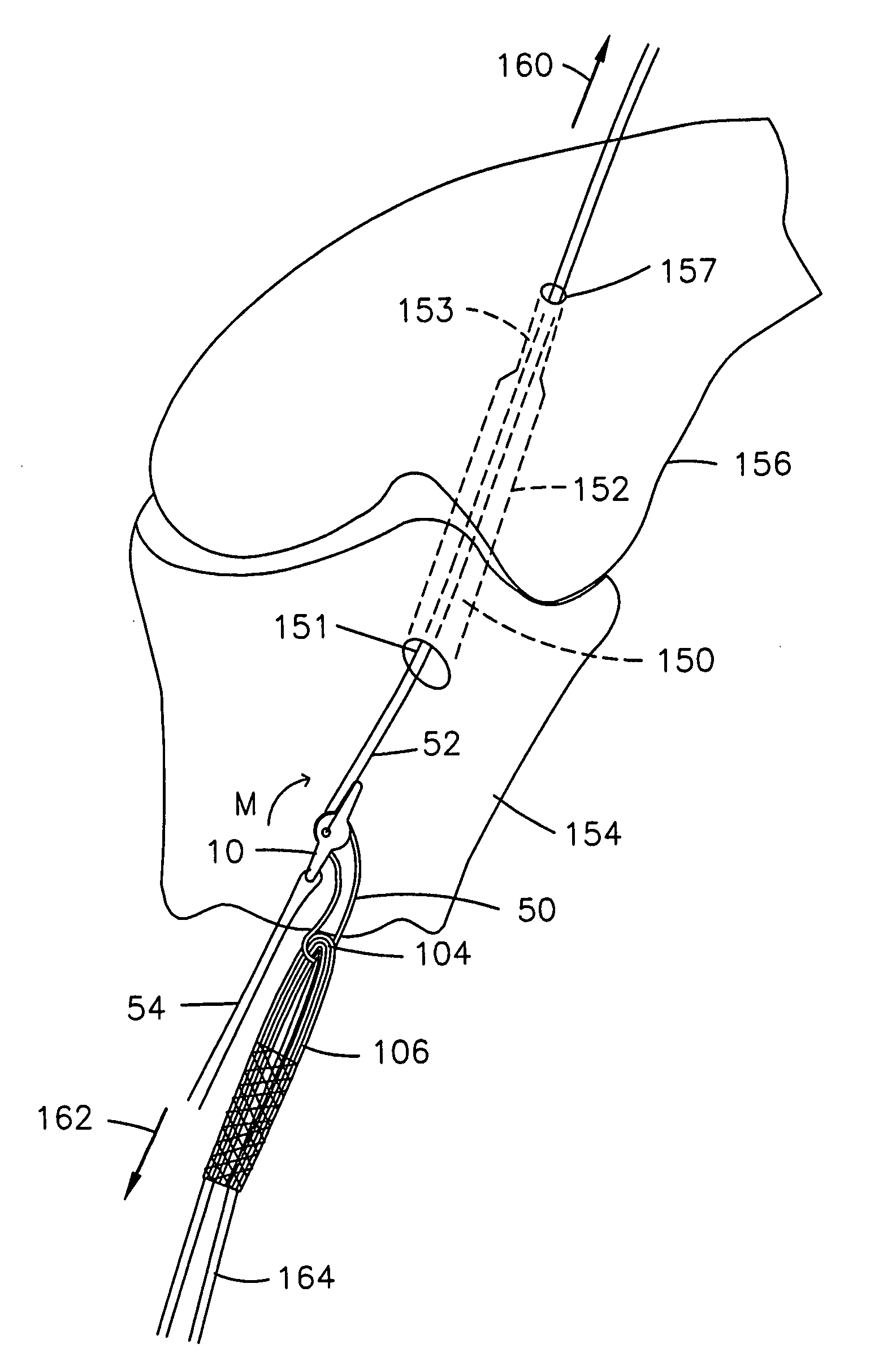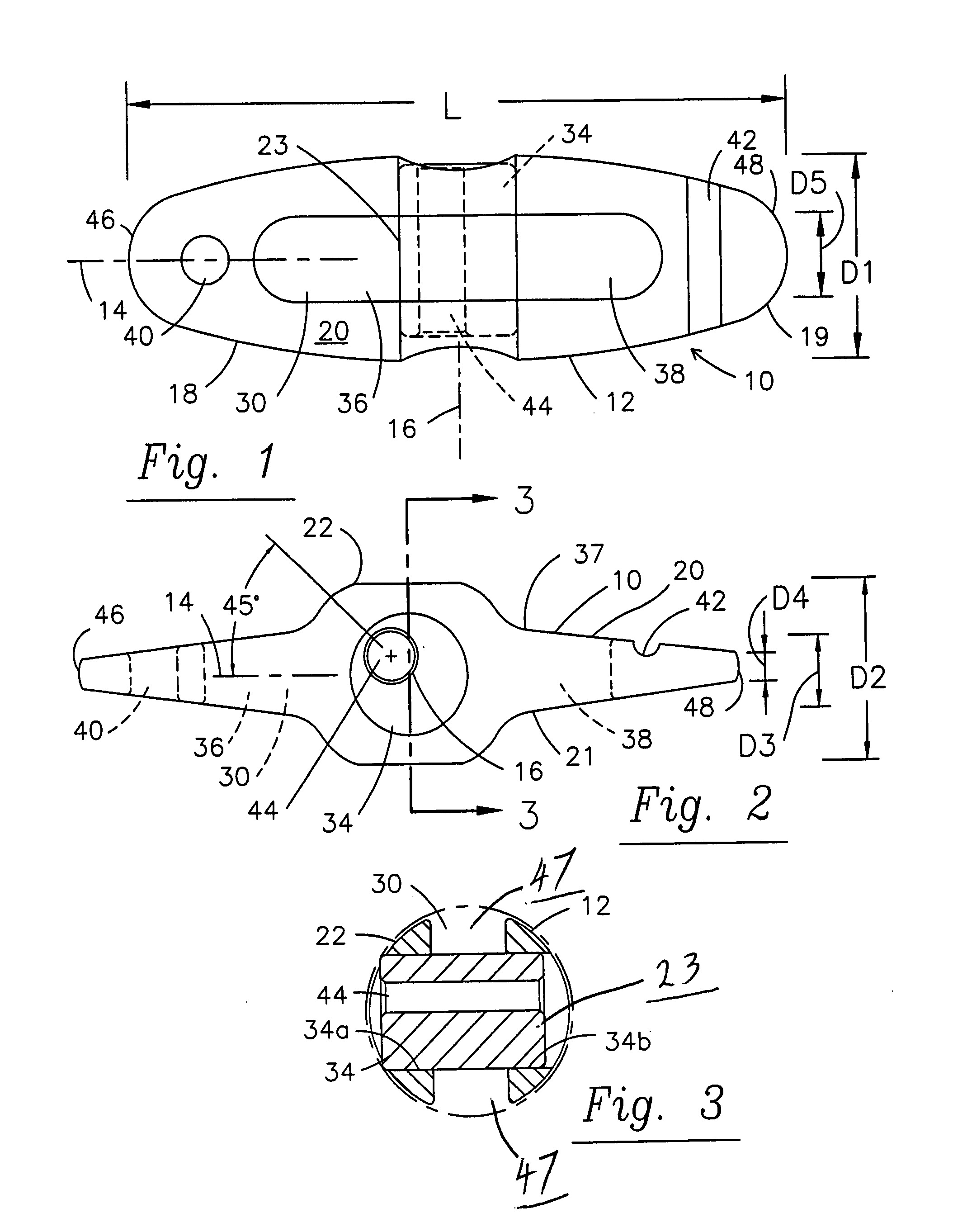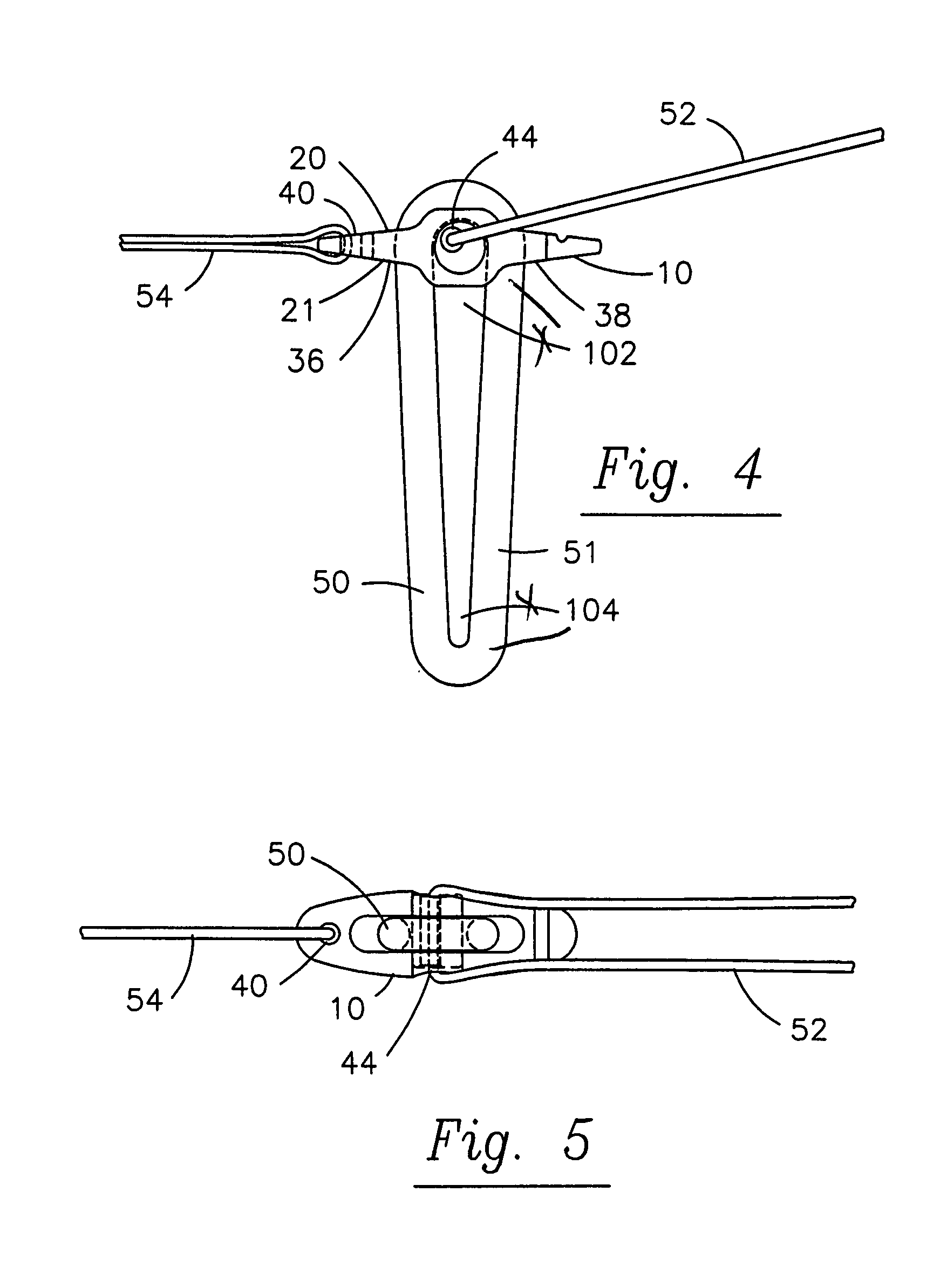Graft fixation implant
a technology for fixing implants and ligaments, applied in the field of graft fixation implants, can solve problems such as difficult repositioning or removal of devices
- Summary
- Abstract
- Description
- Claims
- Application Information
AI Technical Summary
Benefits of technology
Problems solved by technology
Method used
Image
Examples
Embodiment Construction
[0039]FIG. 1 is a top plan view of a preferred embodiment of a graft fixation implant 10 constructed in accordance with the principles of this invention. The terms “graft fixation implant” and “ligament anchor” and “anchor” may be used interchangeably herein. Ligament anchor 10 comprises a generally elliptical body 12 (when viewed in a top plan view), formed from biocompatible, absorbable or non-absorbable materials having a longitudinal axis 14, a transverse axis 16 and proximal and distal ends 18 and 19. Body 12 lies generally in the plane of the paper showing FIG. 1. The proximal end 18 is that portion of body 12 from axis 16 to the left in FIG. 1. Similarly, the portion to the right is distal end 19. The profile in this top plan view may be rectilinear or more rectilinear and less elliptical for certain applications.
[0040]As best seen in FIGS. 1 and 2, anchor 10 also has top and bottom surfaces 20 and 21, respectively, and a central body portion 22 interposed between ends 18 and...
PUM
 Login to View More
Login to View More Abstract
Description
Claims
Application Information
 Login to View More
Login to View More - R&D
- Intellectual Property
- Life Sciences
- Materials
- Tech Scout
- Unparalleled Data Quality
- Higher Quality Content
- 60% Fewer Hallucinations
Browse by: Latest US Patents, China's latest patents, Technical Efficacy Thesaurus, Application Domain, Technology Topic, Popular Technical Reports.
© 2025 PatSnap. All rights reserved.Legal|Privacy policy|Modern Slavery Act Transparency Statement|Sitemap|About US| Contact US: help@patsnap.com



